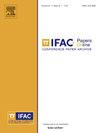资源约束下自主导航的有效和风险意识框架
Q3 Engineering
引用次数: 0
摘要
路径规划是自动驾驶汽车面临的一个关键挑战,需要平衡安全和效率的解决方案。本文提出了一种不依赖精确GPS、高清地图或高速通信的自主道路导航系统,特别适用于城市化程度较低的农村地区。该方法采用基于触手的路径规划算法,在保证安全的前提下计算出最快的路径。根据激光雷达(或其他传感器)数据构建并不断更新的实时可穿越性地图,使机器人能够动态评估碰撞风险。该算法考虑了传感器感知极限,确保任何出现在传感器范围之外的新障碍物不会引起碰撞。仿真结果给出了评估和证明我们的方法的能力,同时优化速度,同时确保安全保障。本文章由计算机程序翻译,如有差异,请以英文原文为准。
Efficient and Risk-Aware Framework for Autonomous Navigation in Resource-Constrained Configurations
Path planning is a key challenge for autonomous vehicles, requiring solutions that balance safety and efficiency. This article proposes an autonomous road navigation system that does not rely on precise GPS, HD maps, or high-speed communication, making it particularly suitable for sparsely urbanized rural areas. The proposed method uses a tentacle-based path planning algorithm to compute the fastest possible trajectory while ensuring safety. A real-time traversability map, built and continuously updated from LiDAR (or alternative sensor) data, allows the robot to dynamically assess the risk of collision. The algorithm accounts for sensor perception limits, ensuring that any new obstacle appearing beyond the sensor range will not cause a collision. Simulation results are presented to evaluate and demonstrate our approach’s ability to simultaneously optimize speed while ensuring safety garentees.
求助全文
通过发布文献求助,成功后即可免费获取论文全文。
去求助
来源期刊

IFAC-PapersOnLine
Engineering-Control and Systems Engineering
CiteScore
1.70
自引率
0.00%
发文量
1122
期刊介绍:
All papers from IFAC meetings are published, in partnership with Elsevier, the IFAC Publisher, in theIFAC-PapersOnLine proceedings series hosted at the ScienceDirect web service. This series includes papers previously published in the IFAC website.The main features of the IFAC-PapersOnLine series are: -Online archive including papers from IFAC Symposia, Congresses, Conferences, and most Workshops. -All papers accepted at the meeting are published in PDF format - searchable and citable. -All papers published on the web site can be cited using the IFAC PapersOnLine ISSN and the individual paper DOI (Digital Object Identifier). The site is Open Access in nature - no charge is made to individuals for reading or downloading. Copyright of all papers belongs to IFAC and must be referenced if derivative journal papers are produced from the conference papers. All papers published in IFAC-PapersOnLine have undergone a peer review selection process according to the IFAC rules.
 求助内容:
求助内容: 应助结果提醒方式:
应助结果提醒方式:


